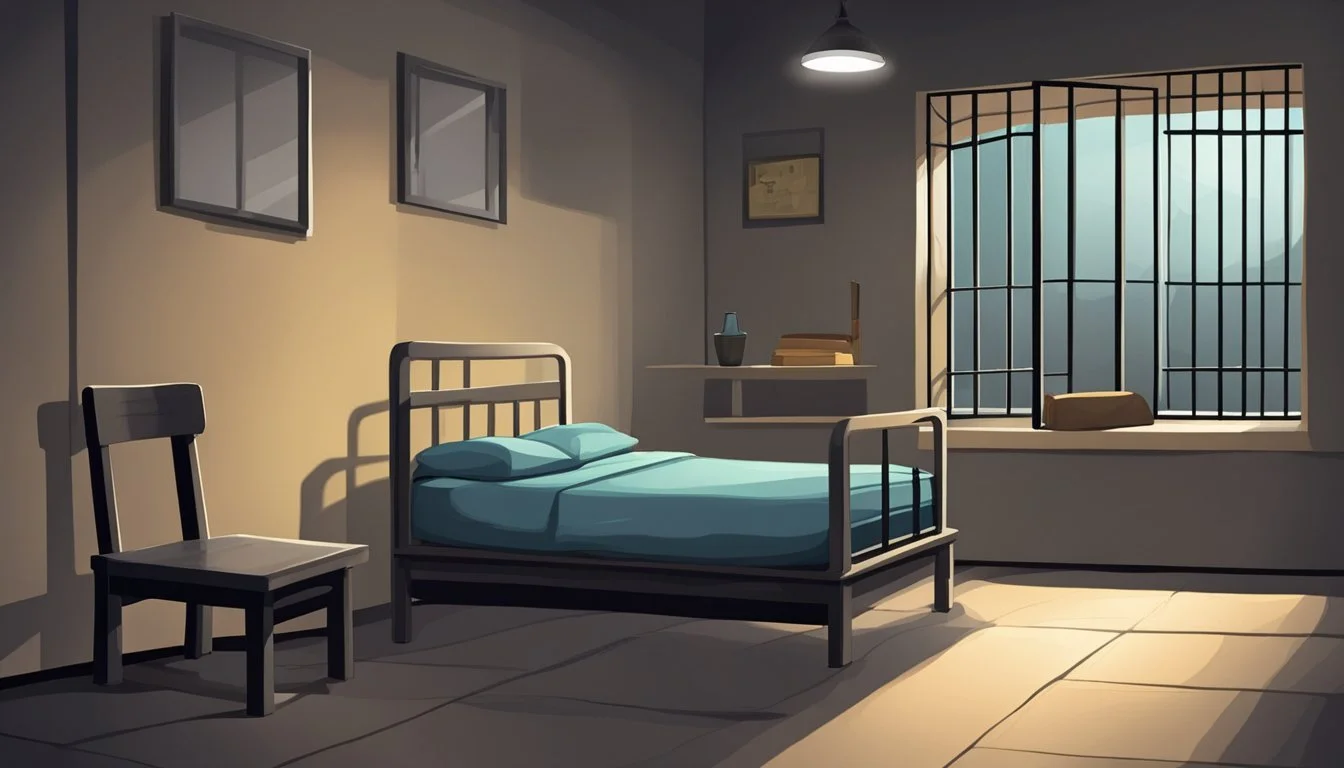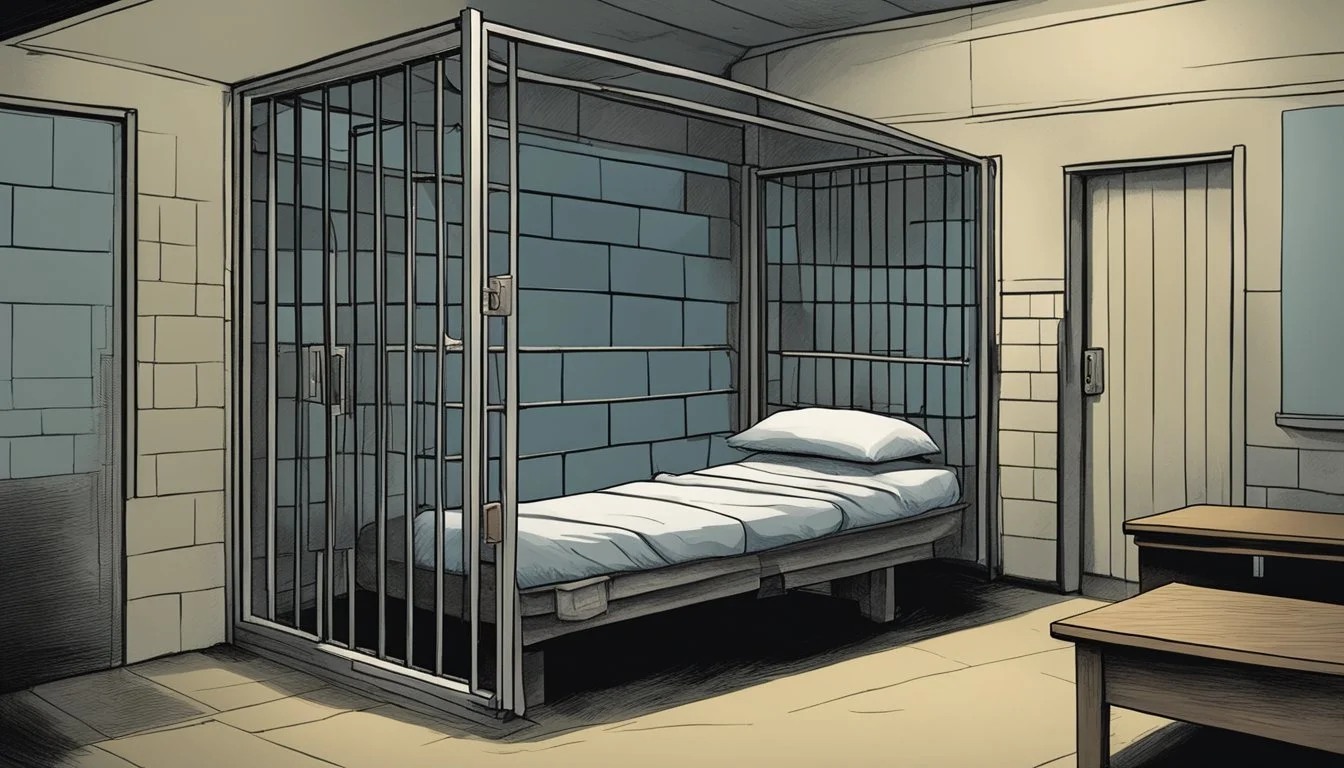Bobby Joe Long's Final Classification: Executed on Death Row
Serial Killer Meets Justice After 35 Years
Bobby Joe Long, a notorious serial killer who terrorized the Tampa Bay area in Florida during the 1980s, met his fate on May 23, 2019. After spending over three decades on death row, Long was executed by lethal injection at Florida State Prison. His execution marked the end of a dark chapter in Florida's criminal history.
Long's crimes were heinous and widespread. He was convicted of murdering at least eight women and claimed to have committed around 40 rapes. His reign of terror lasted for eight months in 1984, during which he abducted, sexually assaulted, and killed his victims.
The execution of Bobby Joe Long brought closure to the families of his victims and the communities affected by his crimes. It also reignited discussions about the death penalty and the justice system's handling of serial killers. Long's case remains a chilling reminder of the impact of violent crime and the long path to justice for victims and their loved ones.
Background of Bobby Joe Long
Bobby Joe Long's history reveals a troubled individual who evolved into a notorious criminal. His early experiences and escalating criminal behavior ultimately led to his classification as a dangerous serial offender.
Early Life and Criminal Beginnings
Born on October 14, 1953, in Kenova, West Virginia, Bobby Joe Long faced a challenging childhood. He suffered from an extra X chromosome, a condition associated with Klinefelter syndrome. This medical issue may have contributed to his developmental difficulties.
Long's early years were marked by instability and trauma. He experienced head injuries as a child, which some speculate could have affected his behavior later in life.
As an adult, Long began exhibiting violent tendencies. His criminal activities started with smaller offenses but quickly escalated to more serious crimes.
Classification as 'Classified Ad Rapist'
In the early 1980s, Long earned the moniker "Classified Ad Rapist" due to his method of finding victims. He scanned newspaper ads for items for sale, often targeting women who were alone when he visited to inquire about purchases.
Long committed approximately 50 rapes using this tactic. His crimes primarily occurred in the Tampa Bay area of Florida.
This pattern of sexual assaults established Long as a dangerous predator. Law enforcement efforts to apprehend him intensified as the number of victims grew.
Long's classification evolved from rapist to serial killer in 1984 when he began murdering his victims. This escalation in violent crimes led to a massive manhunt and his eventual capture.
Crimes and Victims
Bobby Joe Long committed a series of brutal crimes in the Tampa Bay area during 1984. His violent spree included multiple murders, rapes, and abductions that terrorized the region.
Murders in the Tampa Bay Region
Bobby Joe Long killed at least 10 women in the Tampa Bay area over an 8-month period in 1984. His first known victim was 20-year-old Artiss Wick, abducted and murdered on March 27. Long strangled most victims after sexually assaulting them. He disposed of bodies in remote areas.
Other confirmed victims included Ngeun Thi Long, Michelle Simms, and Elizabeth Loudenback. Long targeted women in vulnerable situations, often sex workers or those walking alone. He used his charm and lies to lure victims into his car before attacking them.
Abductions and Rapes
Before his murder spree, Long had a history of sexual violence. He committed around 50 rapes in the early 1980s, earning the moniker "Classified Ad Rapist". Long found victims through newspaper ads for items for sale. He would visit homes and attack women alone.
His abduction methods evolved during his murder spree. Long cruised areas frequented by sex workers, offering rides. He then overpowered and restrained victims in his car. Long took captives to various locations where he repeatedly raped them before murders.
Surviving Victims
Lisa McVey, 17, survived an encounter with Long in November 1984. He abducted and held her captive for 26 hours. McVey's detailed testimony was crucial in Long's capture. She provided information about his car and appearance to police.
Another survivor was a 14-year-old girl Long attempted to abduct in 1984. She escaped by jumping from his moving vehicle. Her report helped link Long to the murders. These survivors' accounts were vital in building the case against Bobby Joe Long and ultimately bringing him to justice.
Arrest and Legal Proceedings
Bobby Joe Long's reign of terror ended with his capture in 1984. Law enforcement efforts led to his arrest, trial, and eventual conviction for multiple murders.
Capture and Evidence Collection
On November 16, 1984, Long was arrested in Tampa, Florida. A survivor's detailed description helped police identify and apprehend him. Investigators found crucial evidence linking Long to the murders, including red carpet fibers matching those found on victims' bodies.
Law enforcement searched Long's car and home, uncovering items belonging to several victims. DNA evidence, still a new technology at the time, also played a role in connecting Long to the crimes.
Trial and Conviction
Long's trial began in April 1985 in Hillsborough County. Prosecutors presented a strong case, including survivor testimony and physical evidence. The jury found Long guilty of multiple counts of first-degree murder.
On September 23, 1985, Long received two death sentences for the murders of Michelle Simms and Virginia Johnson. The court also handed down additional life sentences for other murders and crimes.
Life Sentences and Appeals
In addition to his death sentences, Long received multiple life sentences for other murders, including that of Chanel Williams. Over the years, Long filed several appeals, attempting to overturn his convictions and death sentences.
His appeals process lasted decades, with various legal challenges reaching state and federal courts. Long's attorneys argued issues such as ineffective counsel and problems with evidence presentation.
Despite these efforts, courts consistently upheld Long's convictions and sentences. His final appeal was denied in 2018, clearing the way for his execution.
Death Row and Execution
Bobby Joe Long spent over three decades on death row before his execution in 2019. His final years, last meal, and the details of his execution were closely documented.
Final Years on Death Row
Long was one of Florida's longest-serving death row inmates. He spent 34 years awaiting execution at Florida State Prison. During this time, Long exhausted his legal appeals and clemency options.
His case gained renewed attention in the years leading up to his execution. Survivors of his attacks advocated for carrying out the death sentence. Long's mental health and childhood trauma became subjects of debate in his final appeals.
Execution Procedures and Last Meal
The execution was scheduled for May 23, 2019, at Florida State Prison. Long was to be put to death by lethal injection, the standard method in Florida.
For his last meal, Long requested:
Roast beef
Bacon
French fries
Soda
The meal was served to him approximately 24 hours before the scheduled execution time.
Final Words and Witnesses
Long did not provide any final statement before his execution. He remained silent as the lethal drugs were administered.
Several witnesses attended the execution:
Survivors of Long's attacks
Family members of his victims
Law enforcement officials involved in his case
The execution began at 6:43 p.m. and Long was pronounced dead at 6:55 p.m. His silence in his final moments contrasted with the impact of his crimes on the survivors and families present.
Impact and Aftermath
Bobby Joe Long's execution marked the end of a decades-long saga that deeply affected the Tampa Bay area. His crimes and subsequent punishment left lasting effects on victims' families, law enforcement, and society at large.
Influence on Law and Society
Long's case highlighted vulnerabilities in law enforcement practices of the 1980s. It led to improvements in victim identification methods and evidence collection procedures. The Hillsborough County Sheriff's Office implemented new protocols for investigating serial crimes.
Long's capture also emphasized the importance of DNA evidence in solving complex cases. This prompted increased funding for forensic labs across Florida.
The extended period between Long's conviction and execution sparked debates about the death penalty process. Some argued for faster executions, while others used the case to advocate for alternatives to capital punishment.
Victims' Families and Closure
For many victims' families, Long's execution provided a sense of justice and closure after 34 years. Some attended the execution, describing it as a necessary end to a painful chapter.
Others found the execution reopened old wounds. Several family members expressed mixed emotions, acknowledging that Long's death couldn't bring back their loved ones.
Support groups formed in the aftermath of Long's crimes continued to assist families long after the execution. These organizations played a crucial role in helping victims' relatives cope with their loss and navigate the justice system.
Surviving Victim's Advocacy
Lisa McVey, Long's sole surviving victim, became a powerful advocate for sexual assault survivors. Her testimony was crucial in Long's conviction.
After the execution, McVey continued her work as a sheriff's deputy, specializing in sex crimes and missing persons cases. She frequently spoke at schools and events, sharing her story to raise awareness about sexual violence.
McVey's advocacy efforts led to improved support systems for assault survivors in Florida. She pushed for better training for law enforcement in handling sexual assault cases and increased resources for victims.
Her story inspired legislative changes, including stronger penalties for repeat offenders and enhanced victim protection measures.
Controversies and Ethical Considerations
Bobby Joe Long's case sparked debates on capital punishment and the role of mental health in criminal justice. These issues remain contentious topics in discussions about the death penalty.
Debate over the Death Penalty
Long's execution reignited arguments surrounding capital punishment. Supporters viewed it as justice for his victims and their families. They argued that the death penalty serves as a deterrent and provides closure.
Critics questioned the morality and effectiveness of state-sanctioned executions. They pointed to the possibility of wrongful convictions and the high costs associated with death penalty cases. Some advocated for life imprisonment without parole as an alternative.
The long wait between sentencing and execution also faced scrutiny. Long spent over three decades on death row before his execution in 2019.
Mental Health and Criminal Behavior
Long's case raised questions about the intersection of mental health and violent crime. Reports indicated he suffered head injuries as a child and experienced behavioral changes afterward.
Some experts argued that these factors should have been considered more heavily during his trial and sentencing. They suggested that better mental health interventions might have prevented his killing spree.
Others countered that mental health issues do not excuse heinous crimes. They emphasized the need to prioritize public safety and victim rights.
The debate highlighted the complex relationship between mental health, criminal responsibility, and appropriate punishments for violent offenders.
Cultural and Media Representation
Bobby Joe Long's crimes and execution garnered significant media attention, shaping public perception and inspiring various works.
Books and Documentaries
Several books have explored Long's life and crimes. "The Killer Beside Me" by Ann Rule delves into Long's background and the investigations that led to his capture. Documentaries like "I Survived" featured Lisa Noland, one of Long's victims who escaped and helped bring him to justice.
True crime podcasts have also covered Long's case, analyzing his methods and motivations. "Serial Killer: Bobby Joe Long" on the Serial Killer Podcast network provided a detailed account of his crimes and trial.
Public Perception and Infamy
Long's name became synonymous with terror in Tampa during the 1980s. His crimes left a lasting impact on the community, with many residents still remembering the fear that gripped the area during his killing spree.
Media coverage of Long's execution in 2019 reignited public interest in his case. News outlets highlighted the closure it brought to victims' families and survivors like Lisa Noland.
Long's case is often cited in discussions about serial killers and the death penalty. It has been used as a case study in criminology courses and forensic psychology programs.






